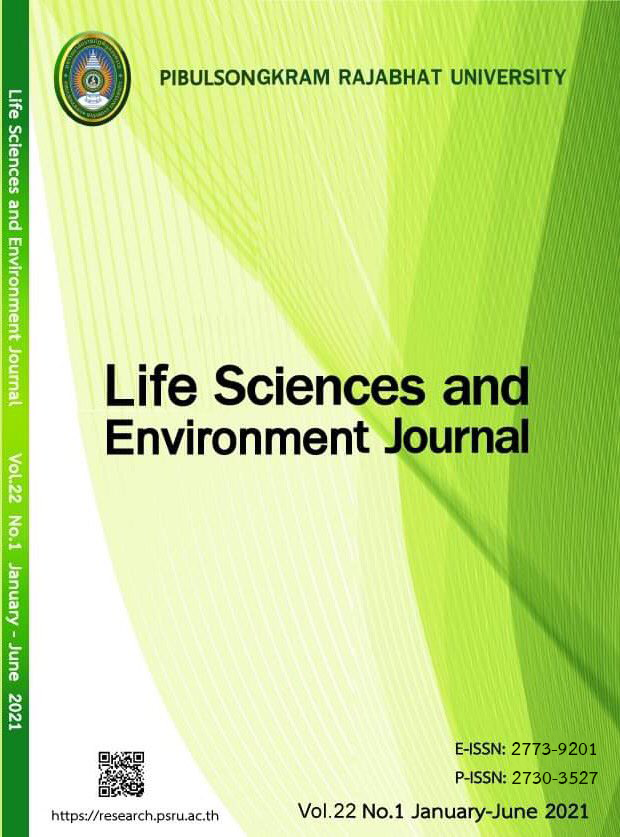RFID APPLICATIONS IN THAILAND’S RETAIL GOLD SUPPLY CHAIN
Keywords:
RFID, Gold investment, Conflict mineralsAbstract
This research explores the use of RFID in the retail gold supply chain as a means of improving supply chain efficiency and mineral traceability. RFID has value as a tracking and tracing technology to reduce supply chain shrink, improve efficiency, and eliminate conflict minerals. The aim of the research is to investigate the benefits and use of RFID in the retail gold supply chain. The paper tests a conceptual framework of barriers and benefits to RFID implementation in the retail gold supply chain in Thailand. This conceptual framework was tested in a survey of gold retail experts in Thailand (n = 237). Analysis was conducted using structural equation modeling. The findings showed that fragmented supply chains (-), traceability (+), supply chain efficiency (+), shrink and inventory control (+) were significant factors in adoption. However, legal import status of gold and artisan production were not significant. The implication of the study is that RFID does have some significant benefits for gold supply chains, but there are also barriers, especially those related to supply chain fragmentation.
References
Agrawal TK, Koehl L, Campagne CA. Secured tag for implementation of traceability in textile and clothing supply chain. The International Journal of Advanced Manufacturing Technology 2018;99 (9-12):2563-2577.
Beck A. Moving beyond shrinkage: Developing a definition and typology of total retail loss. Security Journal 2018;31(1):93-110.
Bergquist B, Vanhatalo E. In-situ measurement in the iron ore pellet distribution chain using active RFID technology. Powder Technology 2020;361:791-802.
Brown TA. Confirmatory factor analysis for applied research. 2nd ed. New York: Guilford Press; 2015.
Dickinson P. 2013. Dodd-Frank Section 1402: Conflict minerals. Available at: http://www.pwc.com/us /en/audit-assurance-services/conflict-minerals.html.
Ferrero R, Gandino F, Montrucchio BR. A cost-effective proposal for an RFID-based system for agri-food traceability. International Journal of Ad Hoc and Ubiquitous Computing 2018;27(4):270-280.
Finch WH, French BF. Latent variable modeling with R. New York: Routledge; 2015.
Finlay D. The 'burden' of traceability in gold supply chains. Journal of Fair Trade 2020;2(1):22-26.
Ghode DJ, Yadav V, Jain R. et al. Blockchain adoption in the supply chain: An appraisal on challenges. Journal of Manufacturing Technology Management, Ahead of print; 2020.
Gravetter FJ, Wallnau LB. Statistics for the behavioral sciences (10th ed). Boston, MA: Cengage Learning; 2017.
Grynberg R, Singogo F. Dubai: Conflict Gold, Money Laundering and Illicit Global Trade; 2019.
Heidingsfelder, J. Private Sustainability Governance in the Making–A Case Study Analysis of the Fragmentation of Sustainability Governance for the Gold Sector. Resources Policy; 2019.
Kiliç S. Cronbach's alpha reliability coefficient. Psychiatry and Behavioral Sciences 2016;6(1):47-48.
Kline RB. Principles and Practice of Structural Equation Modeling. 4th ed. New York: Guilford Press; 2016.
Kumar BS, Raj GR. Gold vs. gold exchange-traded funds: An empirical study in India. Economic Affairs 2019;64(4):703-710.
Lanzano C. Gold digging and the politics of time: changing timescapes of artisanal mining in West Africa. The Extractive Industries and Society 2018;5(2):253-259.
Li X. Reducing Channel Costs by Investing In Smart Supply Chain Technologies. Transportation Research Part E; 2020.
Liu H, Yao Z, Zeng L. An RFID and Sensor Technology-Based Warehouse Center: Assessment of New Model on a Superstore in China. Assembly automation; 2019.
O'Bannion LE, McMurtrey ME. RFID in the retail supply chain. Journal of Strategic Innovation and Sustainability 2018;13(1):70-76.
Safkhani M, Rostampour S, Bendavid Y. et al. IoT in Medical and Pharmaceutical: Designing Lightweight RFID Security Protocols for Ensuring Supply Chain Integrity. Computer Networks; 2020.
Santonino MD, Koursaris CM, Williams MJ. el al. Modernizing the supply chain of Airbus by integrating RFID and blockchain processes. International Journal of Aviation, Aeronautics and Aerospace 2018;5(4):4-17.
Sawng YW, Park Y, Jo SH. et al. Technology adoption and company performance Correlation analysis with the evidence of Korean export companies’ case. Journal of Korea Trade 2018;22(2):143-161.
Schumacker RE, Lomax RG. A Beginner's Guide to Structural Equation Modeling (4thed.). New York: Routledge; 2017.
Tao F, Fan T, Wang YY. Joint pricing and inventory strategies in a supply chain subject to inventory inaccuracy. International Journal of Production Research, Ahead of print; 2019.
Ullah M, Sarkar B. Recovery-channel selection in a hybrid manufacturing-remanufacturing production model with RFID and product quality. International Journal of Production Economics 2020;219: 360-374.
Wang T, Hu B, Chang S. et al. Inventory inaccuracies and radio frequency identification technology: Risk analysis and coordination. Computers and Industrial Engineering 2018;125:9-22.
Wiedenmann M, Größler The impact of digital technologies on operational causes of the bullwhip effect: A literature review. Procedia CIRP 2019;81:552-557.
Yan B, Liu L, Liu S. et al. Influencing factors in the application of RFID technology in the supply chain. The Engineering Economist 2018;63(1):1-19.
Downloads
Published
How to Cite
Issue
Section
License
Each article is copyrighted © by its author(s) and is published under license from the author(s).










